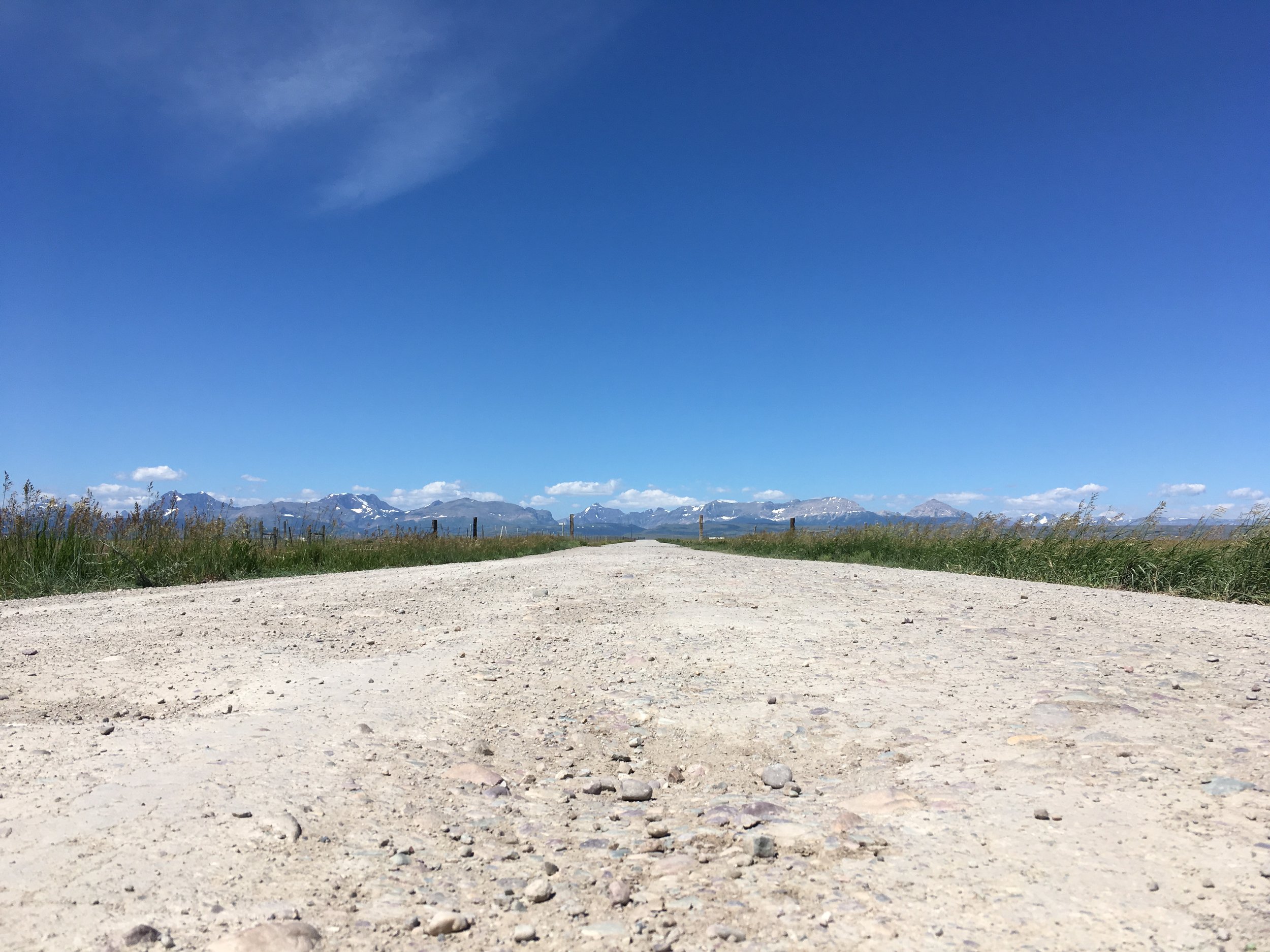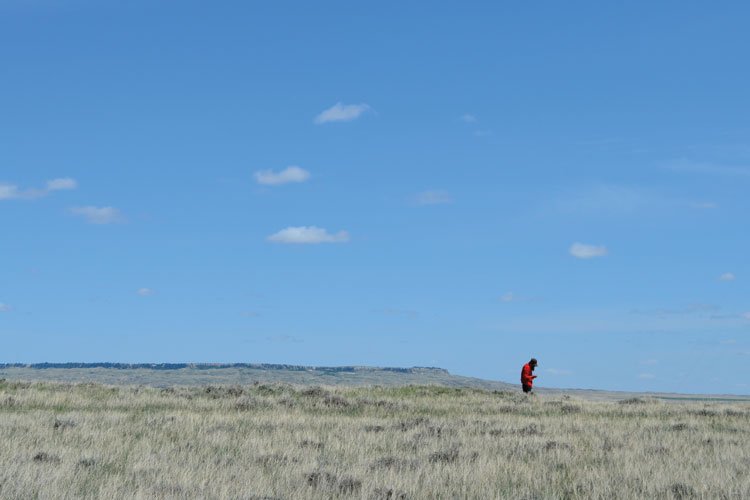FROM AMERICA'S EMPTY QUARTER
WOLF POINT, MT — A dozen miles west of Wolf Point, I decide to walk into nowhere.
Leaving the asphalt of US 2, leaving the SAG wagon I’m driving for a bunch of loony cyclists, I stride a straight and dusty road that runs perpendicular to civilization. A 360-view reveals no houses, no wires, no trees, just flatlands, big sky, and a nothingness that is felt as much as seen. If the moon could be sewn with wheat, its sky tinted blue, all heated to 98 degrees and spread across this land, I am on it now. A Sea of Tranquility. A Sea of the Edge.
Montana has unfolded its map, ironed its western mountains and become this pancake of plains -- a plain and cloudless sky, the plain beige of drought-scorched brush, and plain little towns with plain houses clustered along plain brown rivers, only a steeple or grain elevator rising above the Great and Endless Plainness.
Cross-country motorists gripe about the Plains. Nebraska, Kansas, the Dakotas, and this part of Montana are crossed quickly, with books on CD. Long books.
But cross the Plains at 12 mph, as I have in support of cyclists, stop for an hour and sit in windswept silence, or walk towards the vanishing point, and your perspective changes.
This is America's Empty Quarter. Yesterday, standing around the oasis of a Coke machine, a man told us that Valley County is larger than New Hampshire -- and has 7,000 people. Such emptiness scares anyone who hasn't walked into it. Yet this empty land, thumbing its nose at our over-crowded century, remains one of America's distinguishing features, the testing place of American mettle.
"There's an idea of the Plains as the middle of nowhere," Ian Frazier wrote in his great book Great Plains. "But it's really a heroic place."
I walk further into the emptiness. First US 2, then my car disappear behind the slightest of rises. Turning back to my path of dust, I am lost in the land. No sound of trucks, no visible connection to anywhere, just me and Montana, dirt and sky, grass and wind. I hear my footsteps, the jingle of pocket change, the whip of warm air. I pull up short. Stand. Listen.
A breeze rustles. The only sound. The only motion. Squinting into the scorching sun, I realize that I have found Montana. Not the red state of farms and ranches -- one man told us he owns 100,000 acres -- nor the chic mountain playgrounds, often called "The Last Best Place."
No, I found the Montana of the Crow and the Blackfeet, each nation now roaming sad towns on reservations. I found the Montana where Lewis and Clark saw "scenes of visionary enchantment." This is the Montana that frightens but also beckons, calling us to an Empty Quarter, miles from anywhere, but never "the middle of nowhere."
Time now for one more 360, taking in the horizon, a perfect circle, myself as focal point. I turn and trudge back to the highway, the car, civilization.
I have left Montana now. This part of "flyover country" takes an hour to fly over, two days to drive. My group crossed it by bike -- 10 days en route. We understand America better now. We know what novelist Wallace Stegner, raised on the plains, meant.
"A prairie like that, one big enough to carry the eye clear to the sinking, rounding horizon, can be as lonely and grand and simple in its forms as the sea. It is as good a place as any for the wilderness experience to happen; the vanishing prairie is as worth preserving for the wilderness idea as the alpine forest... We simply need that wild country available to us, even if we never do more than drive to its edge and look in. For it can be a means of reassuring ourselves of our sanity as creatures, a part of the geography of hope."











